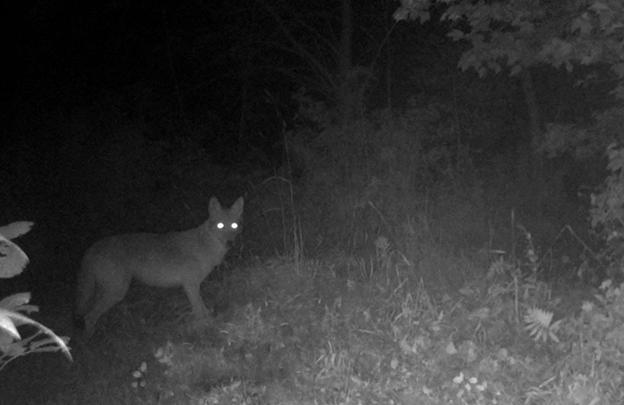Night predator hunting can be lots of fun and highly productive, especially in areas that get a lot of daytime hunting pressure.
However, with that said, you’ll still want to make sure you’re prepared to pursue your target quarry, whether you’re going after foxes, yotes, or cats. Here’s a high-level checklist of what to bring.
-
- Licenses and any applicable permits: This is a basic prerequisite to any hunt; make sure you have permission to hunt the land you plan to visit and that you have the appropriate licenses and permits for the season and tackle you intend to carry.
- Guns and ammo: Another basic prerequisite. Choose a rifle or shotgun and carry appropriate ammo to dispatch your target species at the range you expect to encounter them. Bring along spare cartridges in a box or ammo wallet.
- Shooting sticks or a Tripod: Unless you plan to call a predator into shotgun ranges, chances are you are going to encounter shooting opportunities between 100 to 300 yards, maybe more. This makes a stable shooting platform crucial to an ethical dispatch. Either be prepared with shooting sticks, a bi-pod or tripod, or some other stable rest.
- A thermal scope: Night hunting for predators makes a thermal scope an imperative. Choose a thermal rifle scope with an appropriate detection range, preferably one with an integrated laser range finder so you can more accurately estimate range in order to commit only to effective, ethical shots.
- A thermal optic for scouting: In addition to a thermal scope for your rifle, it doesn’t hurt to be prepared with a backup thermal optic, preferably in the form of a thermal monocular or pair of thermal binoculars. Often these have wider fields of view and are more effective for canvassing and scouting.
- Appropriate clothing: Depending on the time of year, a predator hunt could either be balmy or subzero. Be prepared for the weather depending on the conditions called for. Also, make sure to wear clothing that offers appropriate scent control and be mindful of the wind direction when hunting. One more note: even in the dark, camouflage can be critical. Wear an appropriate pattern and keep your face and hands covered; predator’s eyes are better in the dark than ours are.
- Appropriate footwear: Your hunting boots should be waterproof, supportive, and appropriately rated given the conditions.

- Scent control essentials: While not absolutely critical, scent control essentials like scent-free deodorant or lip balm, are the only ones you should use in the field. Even artificial scents can betray your location.
- A wind check: A wind check, also known as a wind detector, is a small device that enables you to see which way the wind is coming from. This will enable you to position yourself to minimize your scent cone as well as to set yourself up so that you’re prepared to encounter a shot from the right anticipated direction.
- Predator calls: Both electronic and handheld calls can be effective. Electronic calls are louder and can be more realistic than handheld calls, and they’re also highly versatile. However, being electronics, they can be prone to malfunction. Handheld calls are more affordable and more reliable, but they can also be harder to learn how to use. The choice is yours, just make sure you are prepared with at least one type of call and know how to use it before the hunt.
- A decoy: Not absolutely necessary, but a decoy can help you lure in a predator, especially foxes and coyotes. Decoys can also help absorb the predator’s attention, keeping it off of you.
- A comfortable seat: Predator hunts often last for many hours, which can get uncomfortable from the ground. Make sure you bring along a ground pad or at least something cushioned to sit on.
- A drag rope: This will make it easier for you to transport your harvest(s) from the field.
- A flashlight: Mostly these can be effective for tracking down a predator after the shot. All else being equal, choose a red light that will help preserve your night vision.
- A knife: No explanation should be needed here.
- A property map: Useful for identifying land formations and features, for scouting, and to ensure you’re on legal land.
- Licenses and any applicable permits: This is a basic prerequisite to any hunt; make sure you have permission to hunt the land you plan to visit and that you have the appropriate licenses and permits for the season and tackle you intend to carry.
Keep in mind that while this checklist should prove useful for most predator hunts, it is by no means comprehensive. Be sure to carry all gear required by law, and, if going on a guided hunt, bring anything else the guide recommends or requires for the hunt.

Before the Hunt
Before your hunt, do your homework. Make sure the plot you’ve identified is either public land or that, if private, you have the appropriate permission to hunt it.
Also, if possible, pattern predators by setting up trail cameras so you know what their habits are, as well as where to expect them to approach you.
Practice your predator calling so you’re ready with a few different options (cottontail call, coon squall, mouse squeeze, etc.) before the hunt.
And, of course, if using a shotgun, pattern it with the ammo you intend to use so you can keep your shots within ethical range.
With that said, be patient on the night of. Sometimes predators will approach very cautiously and you might have to sit and wait or call for hours before you get a shot, but in predator hunting, patience pays dividends.


